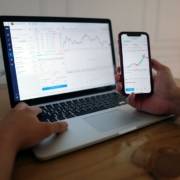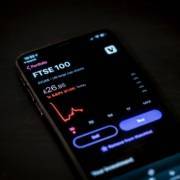The Evolution of Simulations in Financial Education
The world of financial education has come a long way from traditional teaching methods. As the complexity of financial markets has grown, so too has the need for innovative educational tools that reflect the real-world scenarios faced by finance professionals. This is where simulations come in. They offer a unique blend of experiential learning and practical experience, making them an invaluable resource in today’s financial curriculums. This article will trace the evolution of simulations in financial education, from the rudimentary to the highly sophisticated, as we delve into how these tools have shaped and continue to influence the learning landscape.
The Early Days: Board Games and Manual Exercises
The concept of simulations in education is not new. For decades, educators have used a variety of tools to simulate real-world experiences in a controlled environment. In financial education, this started with board games and manual exercises. Games like ‘Monopoly’ introduced players to the basics of property investment and risk management. Manual exercises, on the other hand, used hypothetical scenarios to teach students about stock trading, investment strategies, and financial decision-making.
These tools offered a hands-on, engaging way to learn about finance. However, they had their limitations. The scenarios were static, which meant they could not fully capture the dynamic, ever-changing nature of financial markets. Additionally, these methods were often time-consuming and lacked the capability to provide immediate feedback.
The Digital Revolution: Computer-Based Simulations
The advent of computer technology marked a turning point in the evolution of financial education simulations. Computers offered the ability to create dynamic, interactive scenarios that closely mirrored real-world financial markets. As a result, computer-based simulations became an increasingly popular tool for financial education.
The first computer-based simulations were relatively simple, often focusing on specific aspects of financial markets such as stock trading or portfolio management. These simulations allowed students to experiment with different strategies and see the potential outcomes of their decisions. However, they were still limited in terms of complexity and realism.
The Modern Era: Sophisticated, Real-Time Simulations
The continued advancement of technology has led to a new era of simulations in financial education. Modern simulations are highly sophisticated, leveraging real-time data and complex algorithms to create scenarios that accurately reflect the intricacies of global financial markets.
Companies like CapitalWave’s Finance Lab Software have developed a range of simulation platforms that cover different aspects of financial markets, from equity and commodity trading to forex and portfolio management【7†source】【8†source】. These platforms are designed to be dynamic, flexible, and user-centric, allowing students to create simulations that align with their learning objectives【7†source】.
These modern simulations provide a multitude of benefits. They facilitate experiential learning, allowing students to learn by doing and to immediately see the consequences of their actions【15†source】. They also promote active experimentation and provide immediate feedback, both of which are critical for effective learning.
Moreover, these simulations can be used in a variety of educational settings. They can be integrated into university finance labs, used in student competitions, and utilized by student finance clubs to create internal competitions that expose students to different market segments【18†source】【19†source】.











